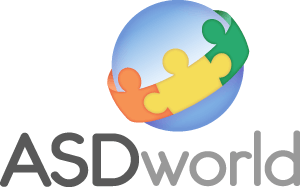Project: “Open-source” school for autistic children
I refer to this as 30seats.com, wth a focusing on creating one classroom at a time to serve our entire community of new children with ASDs.
Mission:
A program that would collect, create, and curate tools, information, and content to address the physical, program, and regulatory requirements to found a school-centered program for children with autistic spectrum disorders.
Need:
The CDC has updated long-standing incidence rates that had been widely quoted as 1:150 children, 1:94 boys. Now these numbers stand at about 1:100 children, with 1:60 boys nationally. With 115000 births in NJ, each year approximately 1150 children will be diagnosed in this state alone. (California has similar rates applied to a much larger population.) When we first visited one of the seven well-known ABA schools in NJ, with a waiting list in the hundreds, the director said to the assembled parents, and not jokingly, that rather than hope for a spot off the waiting list, they might consider starting a school, and that the director had lists of interested parents. Existing high quality programs may have as many as two openings each year, for a total of 14 spots for the 1150 children on the autistic spectrum. This availability is woefully inadequate, and it has been hard for public programs to maintain the same levels of quality in their instruction, as evidenced by their scarcity. Many don’t succeed. Even now, it’s harder in NJ to start a school from scratch because of “politics.”
Value:
Early intensive behavioral intervention, commonly referred to as ABA/Applied Behavior Analysis, is generally regarded as the only intervention that is supported by peer-reviewed research. A crowd-sourced set of materials, curated by experienced professionals, can greatly improve the efficiency for parent groups, and even school districts, looking to create new effective programs. Forming a new school currently takes 1-2 years before students can even begin instruction, let alone be fully integrated into a program. Almost any improvement in this process will create vast advances for children across the spectrum. There are economies of scale to be gained from experience even in specific jurisdictions, and other issues, such as curriculum, should readily be shared and improved upon across a number of schools. This application of technology to social problems turns a training video for 20 teachers into one for 2000.
Why 30seats?
The NYC/NJ area is conveniently the home to long-standing schools (and related researchers) for autistic children, including Alpine Learning Group and Princeton Child Development Institute. It is also home to more recently founded schools such as REED Academy, which is further in the final stages of a capital campaign to build a permanent facility. This richness of institutional experience, ongoing operations, and personal resources make the area a ideal location in which to start the 30seats project.
Will people & institutions contribute?
These nonprofit institutions share information currently on a variety of formal and informal bases, but there is tension about sharing materials that could be used by for-profit entities. However, the rise of Creative Commons-based licensing and use structures makes this less of a problem; organizations and people are more attuned to the issues. I think that parents and therapists involved in home programs will definitely be happy to share and share alike; there’s little doubt that a crowd-sourced library can have far more richness than even the best dedicated programs, especially when the programs are linked to supporting materials (such as having 30 different pictures of police officers rather than 5 for a community helpers program).
Will people & institutions use the materials?
The existing stakeholder groups already share a wide variety of materials. When REED Academy was formed, they received significant advice from existing schools. Even now, during their capital campaign & building project, they are accessing institutional knowledge from other schools.
Why must we do this?
The philosophical beliefs that support this idea are that well-constructed programs and materials are a necessary, but insufficient, prerequisite to learning. Without quality behavioral intervention, programs that are good on paper will not lead to optimal outcomes. We should, as a community, eliminate the easy problems so that our professionals can focus on the hard problems: teaching and training therapists to make moment-to-moment decisions about what will motivate a particular learner to actively engage in learning and positive social interactions.
What can I do to help?
This project needs volunteers with organizational, programming, XML, curriculum design, and ABA skills. The initial piece that seems most useful to all stakeholders and imposes no requirements but creates real standards is an XML-based, open-source curriculum model, a Dewey Decimal system for autism. Using an open-source standard, everyone from parents making their own materials to web-based materials tools and exchanges to online ABA training and curriculum to ABA-based schools for autism can use a similar backdrop, a common language to share materials, programs, and eventually data that can be used to create learning benchmarks to allow for greater feedback into the 1:1 educational process.
This is the only goal: help more kids, more quickly, more effectively, and more efficiently.
